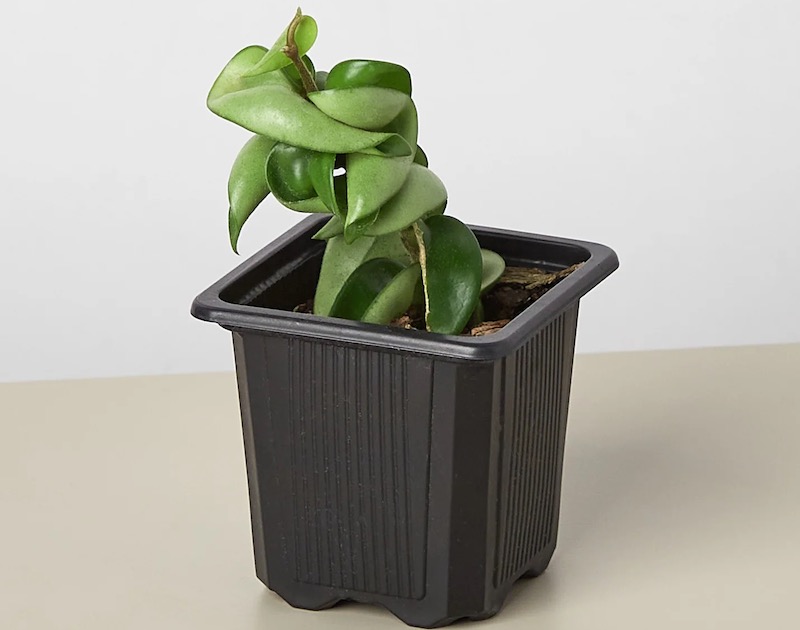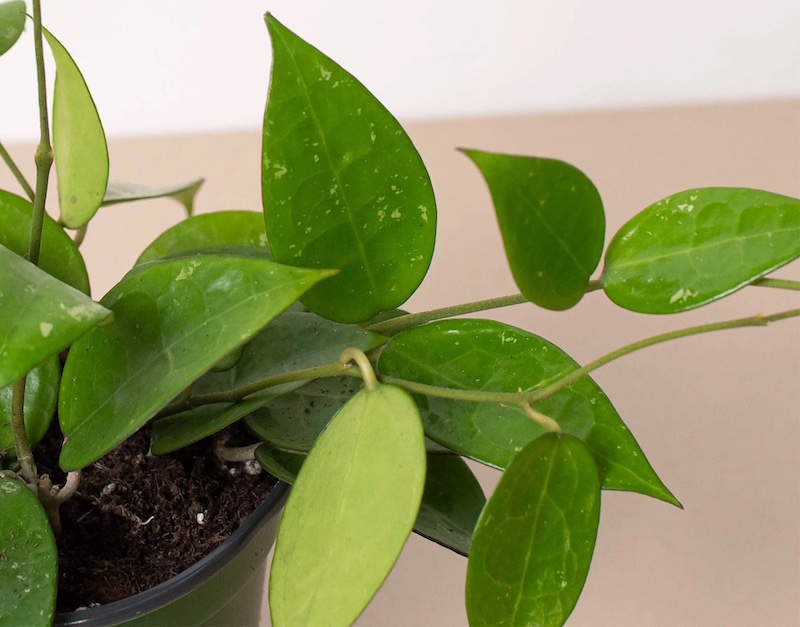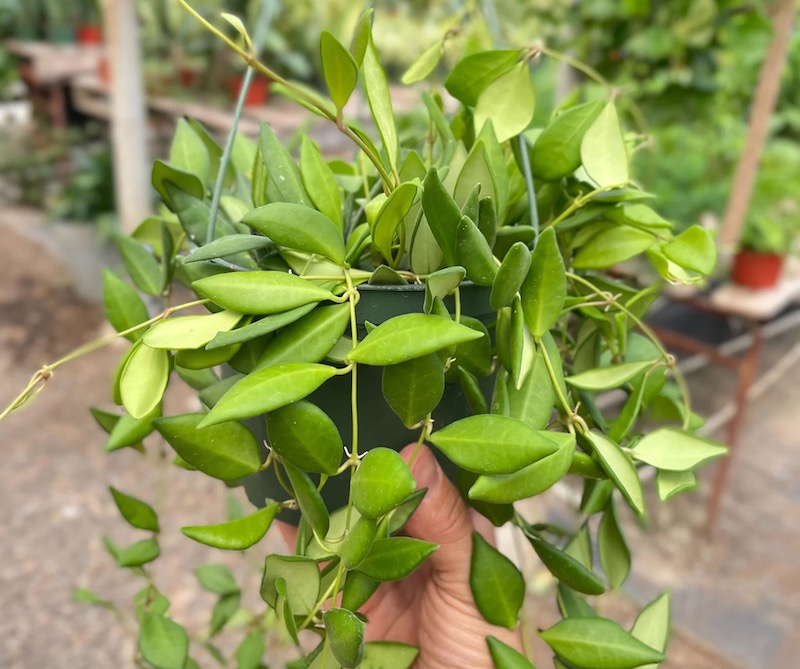Bringing a new houseplant home is always exciting. You most likely spent a great deal of time searching for the best available specimen and have a particular spot in your house for it to live. You should also transplant it into a new pot or hanging basket as soon as possible. Most plants will have outgrown their nursery pots and be ready to go up a size. They also will appreciate fresh growing medium that is better suited for drainage and moisture retention.

Potting Hoya
Planting a Hoya in a new, more decorative pot will allow you to get a good look at the root system of the plant and figure out if any preventative measures need to be taken to guard against overwatering, pests, and diseases. The following steps will help you to settle your new Hoya plant into your houseplant collection with ease.

Step 1 - Find a container with good drainage that is one size up from the current pot. Hoyas do not like to have extra space in a pot and will bloom once the plant is on the verge of being pot-bound.
Step 2 - Fill the bottom of the new pot with a couple inches of potting mix.
Step 3 - Carefully remove the Hoya from its pot. Inspect the root system to ensure that it is healthy, sturdy, and a pale creamy color. Any dark brown or black roots need to be removed to keep the plant from developing root rot.
Step 4 - Keep the plant crown about 1-2 inches below the top of the container and gently fill in around the root system with potting mix. Firm the soil down as you go to ensure that there are no large air gaps.
Step 5 - Water the plant in well, allowing excess water to drain from the bottom of the pot.
Step 6 - Empty any standing water from saucers or cache pots so that the plant does not sit in standing water.
Repotting Hoya
The chances of overwatering Hoya are much higher than underwatering. Fortunately, one of the easiest ways to rehabilitate an overwatered Hoya is to repot it into a well-draining potting mix. Do not be tempted to go up too much in pot size when repotting Hoya plants. They do not like to have too much room in their pots and thrive on being slightly rootbound. If your Hoya has been in a pot for a year or more and is healthy, then a top dressing of fresh potting mix or fine Orchid Bark may be all that is needed to jump-start new growth. Remove the top 1-2 inches of soil from the top of the pot and add the same amount of new soil. As you water, any micronutrients in the new soil will wash down to the root system.

Best Soil For Hoya
In their native climate, Hoya is an epiphytic plant that requires a host plant to grow on. It is not considered a parasitic plant and does no damage to the host. It burrows shallowly into the bark and stems of the host plant to anchor its root system, much like epiphytic Orchids do, giving you a clue as to what texture of potting medium they prefer. An all-purpose potting mix alone is often too heavy for Hoya roots. The root system needs very good air circulation and excellent drainage. Mixing fine Orchid Bark with the potting mix at a ratio of 1:1 is an excellent option. Potting mixes developed for Sedums and other succulents are another great choice. These mixes are very free draining with large amounts of perlite and sand mixed in.
Hoya Drainage
Drainage is a very important consideration for almost any plant grown as a houseplant. Hoya plants require excellent drainage in both the potting medium and the container that it is growing in. Sold bottom pots should only be considered as decorative cache pots and will need to be emptied after watering if there is standing water.
 |
Author Robbin Small - Published 04-04-2023 |
